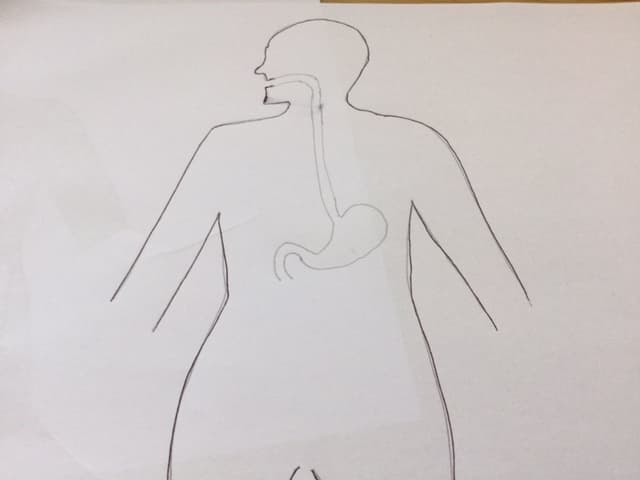Myths about teaching can hold you back
- Year 4
The human digestive system
I can describe the first part of the journey of food through the human digestive system.
- Year 4
The human digestive system
I can describe the first part of the journey of food through the human digestive system.
These resources will be removed by end of Summer Term 2025.
Switch to our new teaching resources now - designed by teachers and leading subject experts, and tested in classrooms.
These resources were created for remote use during the pandemic and are not designed for classroom teaching.
Lesson details
Key learning points
- Humans need food and water to survive and stay healthy.
- In the mouth, the tongue moves food around, the teeth chop it, and saliva makes it easier to swallow.
- Food is pushed down the oesophagus into the stomach, where stomach acid helps to break it down.
- Models can be used to demonstrate and explain things that we are not able to see or experience directly.
Keywords
Digestive system - The digestive system breaks down food into small particles that are absorbed into the blood.
Digestion - Digestion is the process of breaking down food so the body can absorb nutrients.
Saliva - Saliva is a watery liquid in the mouth that keeps it moist and helps prepare food for digestion.
Oesophagus - The oesophagus is a tube that carries food from the mouth to the stomach.
Stomach acid - Stomach acid is a digestive fluid produced by the stomach lining that helps break down food.
Common misconception
Pupils may not realise that there is a continuous system from mouth to anus that is part of a digestive system for food. Also that food goes to the tummy rather than the stomach.
When the pupils sketch the digestive system within the body outline, check the different parts join up to each other so food can pass all the way through. The word 'tummy' is used early on in the slide deck to highlight common misconceptions.
To help you plan your year 4 science lesson on: The human digestive system, download all teaching resources for free and adapt to suit your pupils' needs...
To help you plan your year 4 science lesson on: The human digestive system, download all teaching resources for free and adapt to suit your pupils' needs.
The starter quiz will activate and check your pupils' prior knowledge, with versions available both with and without answers in PDF format.
We use learning cycles to break down learning into key concepts or ideas linked to the learning outcome. Each learning cycle features explanations with checks for understanding and practice tasks with feedback. All of this is found in our slide decks, ready for you to download and edit. The practice tasks are also available as printable worksheets and some lessons have additional materials with extra material you might need for teaching the lesson.
The assessment exit quiz will test your pupils' understanding of the key learning points.
Our video is a tool for planning, showing how other teachers might teach the lesson, offering helpful tips, modelled explanations and inspiration for your own delivery in the classroom. Plus, you can set it as homework or revision for pupils and keep their learning on track by sharing an online pupil version of this lesson.
Explore more key stage 2 science lessons from the Introduction to the human digestive system unit, dive into the full primary science curriculum, or learn more about lesson planning.

Equipment
See additional materials for more detailed guidance.
Content guidance
- Risk assessment required - equipment
- Exploration of objects
Supervision
Adult supervision required
Licence
Prior knowledge starter quiz
6 Questions
Q1.What do humans need to stay healthy?
Q2.Most humans are omnivores. We eat a varied to stay healthy.
Q3.What do humans have in their mouth that helps them to bite and chew food?
Q4.Match the teeth to their function.
grind and chew
cut and bite
rip and tear
Q5.Our lips, and teeth help us to speak clearly.
Q6.The teeth are part of which system in the body?
Assessment exit quiz
6 Questions
Q1.Humans need and water to survive and stay healthy.
Q2.Match the part of the mouth to its function in the digestion process.
chop the food into smaller pieces
moves food around your mouth
moistens the food to make it easier to swallow
Q3.What happens to the food after it leaves the mouth?
Q4.Which of these statements explains what happens in the stomach during digestion?
Q5.Put these parts of the body in the correct order of digestion, starting with the first part of the digestive system.



